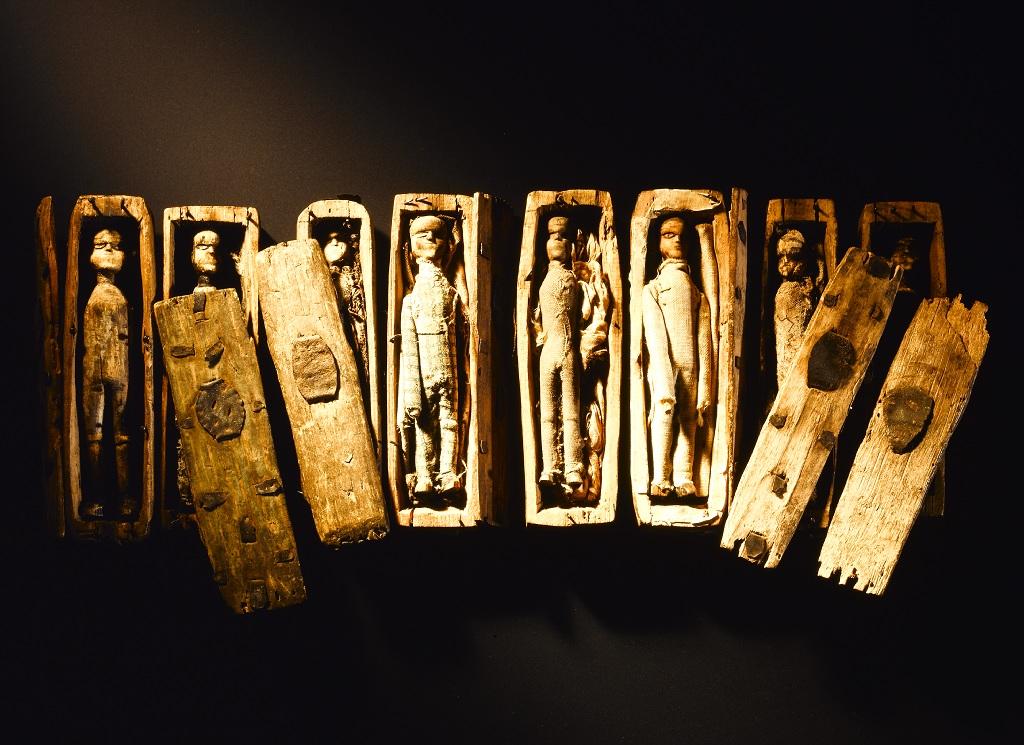Set in Scotland's magnificent capital, Edinburgh, Murder dolls
is a tale of serial killers, Bodysnatchers and grisly science. The
story begins on a misty morning in 1836 with the discovery of 17
miniature wooden coffins. Inside each one, is an eerie, dressed doll.
The discovery of the dolls has led to some interesting theories –
everything from the work of a madman to tales of witchcraft. But some
believe that Edinburgh's miniature coffins may be connected to
Scotland's most notorious serial killers –Burke and Hare - two Irish
laborers who murdered seventeen victims in the 1800's. But how are the
dolls connected to the 17 murder victims – and who made them?
Burke and Hare are notorious even today, but in the time of Ghosts of Albion their crimes are a matter of relatively recent memory. Their murder spree, known as the West Port murders, began in Edinburgh from late 1827 and continued for most of 1828. Their victims were drugged and suffocated to keep them intact; the bodies were sold to a Dr Robert Knox for dissection. In the end, a neighbour discovered the body of their last victim and alerted the police. However, the evidence of murder wasn't actually that good, and Hare was offered immunity if he confessed and testified against Burke. Burke made his own confession - in which he claimed that Dr Knox knew nothing of the origin of the bodies they sold him - but was sentenced to death and hanged in January 1829.
Less well known is that Burke's lover (Helen M'Dougal) and Hare's wife (Margaret, née Laird) were also implicated, though they were released for lack of proof - both narrowly escaped death from an outraged public - M'Dougal is thought to have left the country, while Margaret Hare's dropped off the map. William Hare also dropped off the map, though popular folklore invented a variety of painful ends for him. Despite Burke's claim that Dr Knox was not involved, the scandal destroyed his reputation in Edinburgh, and he went to London, and died in 1862.
At first theories on the dolls significance ranged from witchcraft to child’s toys, but eventually it began to seem that the 17 tiny figures could be effigies for the 17 murder victims a decade earlier.
Between 1827-1828 William Burke and William Hare lured in and murdered their lodgers in a scheme to provide fresh bodies to the local anatomy school. Dr. Robert Knox, a brilliant and well known local anatomy lecturer purchased the bodies, and most likely knew that something was a bit suspicious about his supply chain.
Mystery of Burke & Hare Murderdolls
Burke and Hare are notorious even today, but in the time of Ghosts of Albion their crimes are a matter of relatively recent memory. Their murder spree, known as the West Port murders, began in Edinburgh from late 1827 and continued for most of 1828. Their victims were drugged and suffocated to keep them intact; the bodies were sold to a Dr Robert Knox for dissection. In the end, a neighbour discovered the body of their last victim and alerted the police. However, the evidence of murder wasn't actually that good, and Hare was offered immunity if he confessed and testified against Burke. Burke made his own confession - in which he claimed that Dr Knox knew nothing of the origin of the bodies they sold him - but was sentenced to death and hanged in January 1829.
Less well known is that Burke's lover (Helen M'Dougal) and Hare's wife (Margaret, née Laird) were also implicated, though they were released for lack of proof - both narrowly escaped death from an outraged public - M'Dougal is thought to have left the country, while Margaret Hare's dropped off the map. William Hare also dropped off the map, though popular folklore invented a variety of painful ends for him. Despite Burke's claim that Dr Knox was not involved, the scandal destroyed his reputation in Edinburgh, and he went to London, and died in 1862.
At first theories on the dolls significance ranged from witchcraft to child’s toys, but eventually it began to seem that the 17 tiny figures could be effigies for the 17 murder victims a decade earlier.
Between 1827-1828 William Burke and William Hare lured in and murdered their lodgers in a scheme to provide fresh bodies to the local anatomy school. Dr. Robert Knox, a brilliant and well known local anatomy lecturer purchased the bodies, and most likely knew that something was a bit suspicious about his supply chain.
Mystery of Burke & Hare Murderdolls


No comments:
Post a Comment